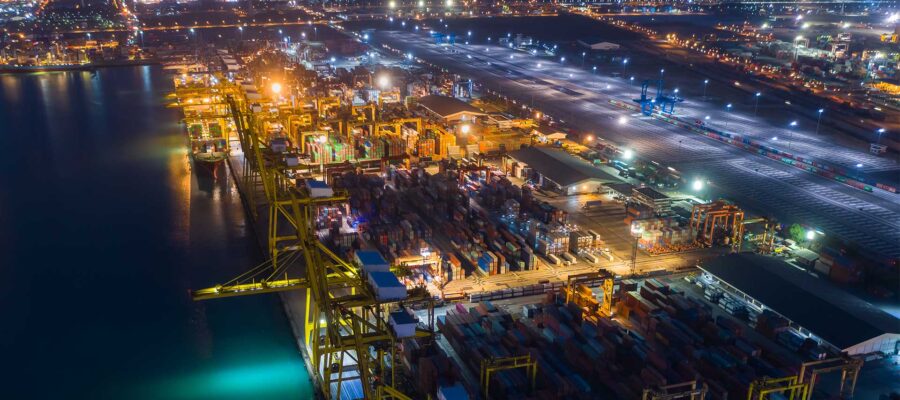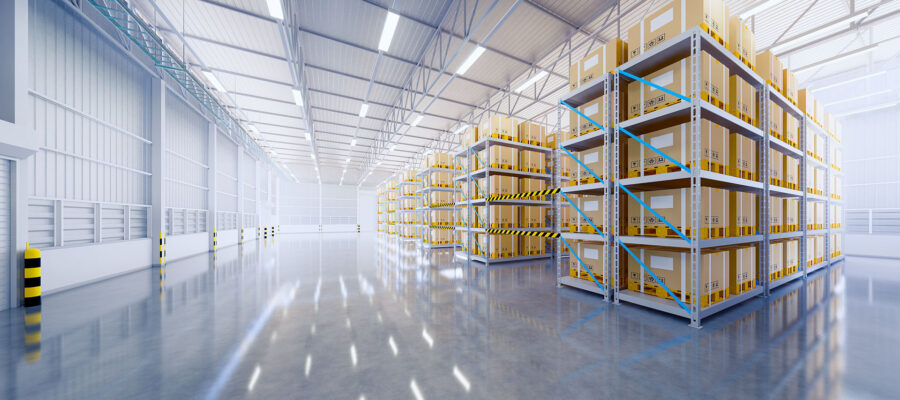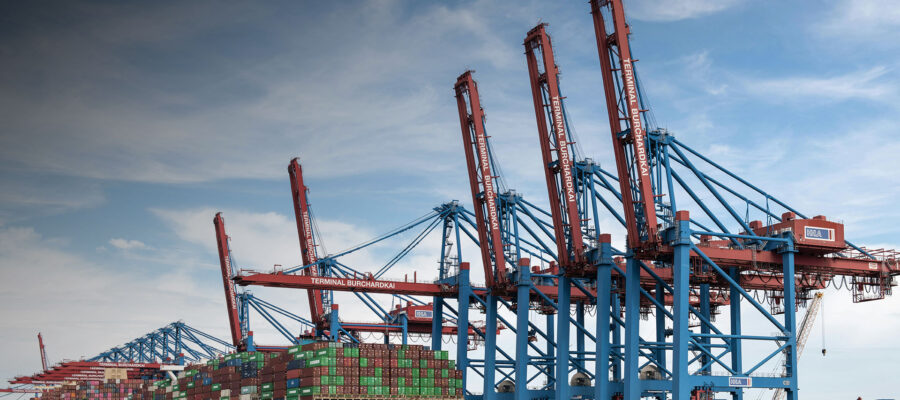This post has already been read 38281 times!
The freight forwarding industry is undergoing a digital renaissance. Technologies once seen as futuristic like real-time tracking and automated customs clearance are now, must have basics. These tools have drastically improved operational efficiency, reduced costs, and enhanced transparency across global supply chains.
Yet, as recent global disruptions and trade wars have reminded us, automation has its limits.
The Red Sea shipping crisis, for example, has upended established routes, causing longer transit times and higher costs. According to a report by Business Standard, shipping and forwarding costs surged by 25–30%, and delays of 12 to 15 days became the new norm for many shipments across key trade lanes. No algorithm could predict or instantly adapt to such a complex geopolitical disruption.
These challenges have sparked an important conversation: In an age dominated by digital transformation, the most resilient freight forwarding operations are those that find equilibrium, leveraging automation while preserving the irreplaceable value of human expertise.
“The most resilient freight forwarding operations are those that find equilibrium, leveraging automation while preserving the irreplaceable value of human expertise.”
Digital Dominance: How Automation Is Reshaping Freight Forwarding
The case for automation in freight forwarding is compelling. Digital tools reduce manual errors, improve speed, and offer greater visibility throughout the logistics chain.
Take documentation management, for instance. Modern platforms now allow freight forwarders to handle bills of lading, certificates of origin, and compliance paperwork digitally, reducing turnaround time and eliminating the inefficiencies of physical documentation. Similarly, quoting engines use historical pricing data and current market conditions to auto-generate quotes with near-instant accuracy. This operation in itself is something that used to take hours, if not days.
"The most resilient freight forwarding operations are those that find equilibrium, leveraging automation while preserving the irreplaceable value of human expertise." Share on XAnother transformative innovation is real-time tracking. GPS-enabled devices and IoT integrations offer granular, real-time visibility into shipments. Clients and operations teams alike can monitor cargo across oceans and borders, enabling proactive decisions when disruptions occur.
Meanwhile, automated customs compliance tools help businesses stay on top of evolving regulatory frameworks. These systems streamline the process of preparing and submitting customs declarations, reducing the risk of delays or costly penalties.
And at the forefront of this digital evolution is AI-powered route optimization. These algorithms assess vast datasets, including port congestion levels, weather forecasts, and vessel schedules to chart the most efficient and cost-effective shipping paths resulting in smarter, leaner logistics operations.
Automation’s Breaking Point: The Red Sea Crisis and Beyond
Despite its advantages, automation doesn’t equate to invincibility. The past few years have demonstrated that relying solely on digital tools can leave supply chains vulnerable when confronted with complex or unpredictable scenarios.
A clear example is the ongoing Red Sea crisis. Following attacks on commercial vessels, many carriers were forced to divert ships around the Cape of Good Hope, leading to substantial delays and spiraling freight costs. According to Marsh, global shipping volumes through the Suez Canal dropped by over 40% at the height of the crisis, underscoring the scale of the disruption.
Automated systems, while powerful, struggled to respond in real-time. Route optimization algorithms weren’t equipped to instantly factor in regional instability, diplomatic uncertainty, and carrier behavioral shifts. Human decision-making had to step in to negotiate new carrier contracts, liaise with clients, and implement workaround solutions.
Relying solely on digital tools can leave supply chains vulnerable when confronted with complex or unpredictable scenarios.
Other recent examples echo this theme. Strikes at key European ports created backlogs that even the most efficient digital systems couldn’t bypass. And then there are policy shifts—like the sudden imposition of U.S. tariffs on all imports. A Wall Street Journal report noted that freight bookings from China dropped by as much as 60% following tariff announcements, creating chaos in container allocation and fulfillment schedules.
No AI, no matter how sophisticated, could navigate the regulatory nuances or client-specific consequences of such changes. In each case, human judgment and industry relationships proved essential.
Why Human Expertise Still Matters in Freight Forwarding
The power of human intelligence in freight forwarding lies in its adaptability. Unlike machines, people excel at interpreting ambiguous situations, forming creative solutions, and engaging with nuance.
When delays threaten to derail a shipment, it’s often the operations manager, not AI, that picks up the phone to reroute cargo, negotiate with port officials, or inform a high-value customer with tact and professionalism. During customs complications, it’s the experienced compliance officer who reads between the lines of ambiguous local regulations to secure clearance.
Human expertise is also critical in relationship management. A digital system can schedule shipments, but it can’t build trust with a shipping line or customs agent. Relationships still matter, perhaps more than ever, in a world where flexibility and responsiveness are key to resilience.
Equally important is an intuitive understanding of customer needs. While automation excels at executing predefined tasks, it falls short of contextual awareness. A logistics coordinator who knows a customer’s supply chain intimately can anticipate risks, customize services, and deliver peace of mind, something that is difficult for software to replicate.
The Human-in-the-Loop Model: A Blueprint for Resilience
The solution isn’t to reject automation, but to integrate it more intelligently. Enter the “human-in-the-loop” (HITL) model, a collaborative framework where humans provide oversight and strategic input at critical points in an otherwise automated process.
In freight forwarding, this model could involve supervisory layers where logistics professionals validate key actions, such as rerouting cargo during a disruption, approving exception handling for regulatory issues, or manually intervening in high-stakes client interactions.
Training plays a major role here. By incorporating human feedback into AI systems, companies can continuously improve automation tools. For instance, logistics professionals can flag when automated routing decisions were suboptimal or suggest rule changes when regulatory tools misinterpret documentation. Over time, this creates a self-learning system enhanced, not hindered, by human judgment.
Preparing the Next Generation of Freight Forwarders
As the industry evolves, so too must its workforce. The forwarding team of the future needs a new blend of capabilities: part data analyst, part customer success manager, part logistics expert.
Professionals now need fluency in both technical systems (e.g., TMS platforms, customs software, API integrations) and interpersonal skills like negotiation, regulatory understanding, and client management.
Forward-thinking organizations are investing in upskilling programs to bridge this gap. Training curricula increasingly combine instruction in digital tools with soft-skill development. This includes modules on data interpretation, situational problem-solving, and cross-cultural communication.
It’s a human who can quickly and effectively decode ambiguity, reroute cargo, negotiate with port officials, or inform a high-value customer with tact and professionalism.
Career paths are also evolving. Roles like “Logistics Data Analyst” and “AI Workflow Supervisor” are emerging alongside traditional operations roles, reflecting the industry’s shift toward hybrid models.
By empowering their teams with this dual capability, companies can ensure they’re not just adopting automation, but doing so in a way that enhances rather than erodes service quality.
Measuring Success in a Hybrid Model
Integrating automation and human expertise is one thing, proving its value is another. Success in a hybrid model depends on balanced, holistic performance metrics.
Efficiency metrics, such as quote response time, average customs clearance duration, or route optimization savings, should be paired with service quality indicators. These include customer satisfaction scores, successful exception resolutions, and account retention rates.
In some operations, companies are also experimenting with a “human intervention ratio”: a measure of how often human override is required in otherwise automated workflows. The goal isn’t to minimize this to zero, but to ensure it reflects deliberate, high-value contributions, not patchwork fixes.
Regular audits of automation efficacy and feedback loops between frontline teams and system developers are essential to keeping these KPIs aligned with real-world conditions.
Balance Is the New Efficiency
The future of freight forwarding isn’t purely digital, it’s hybrid. While automation is a powerful enabler of scale, speed, and consistency, it is not a substitute for the strategic thinking, empathy, and adaptability that experienced professionals bring to the table.
Companies that understand this balance and embed it into their operational DNA will not only weather global disruptions more effectively but emerge as leaders in a rapidly evolving industry.
By investing in both modern, intelligent systems and human expertise, freight forwarders can deliver the holy grail of logistics: operational excellence with resilience, responsiveness, and trust.
AI Plus Humans for Resilient Freight Forwarding in a Complex World Share on X


